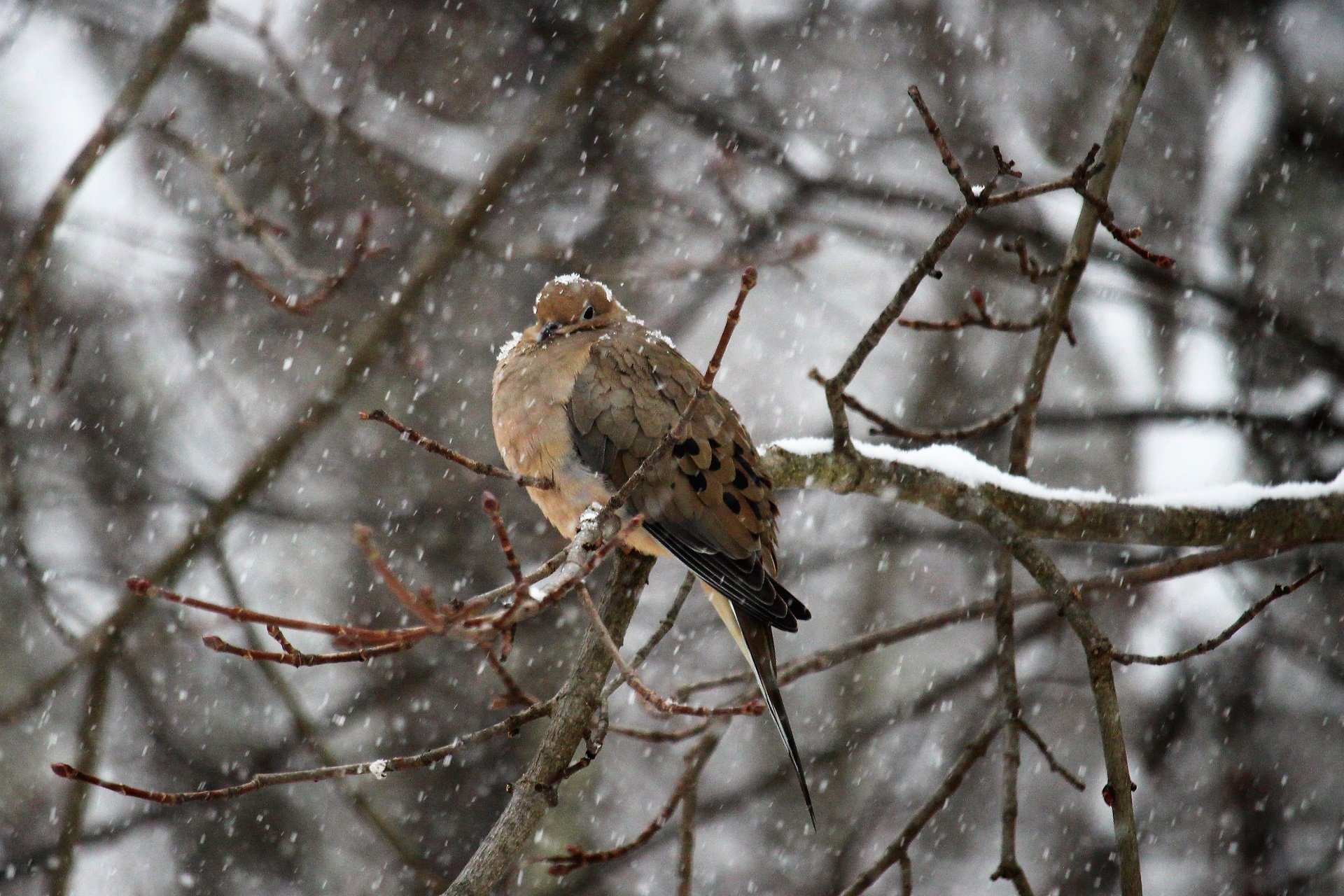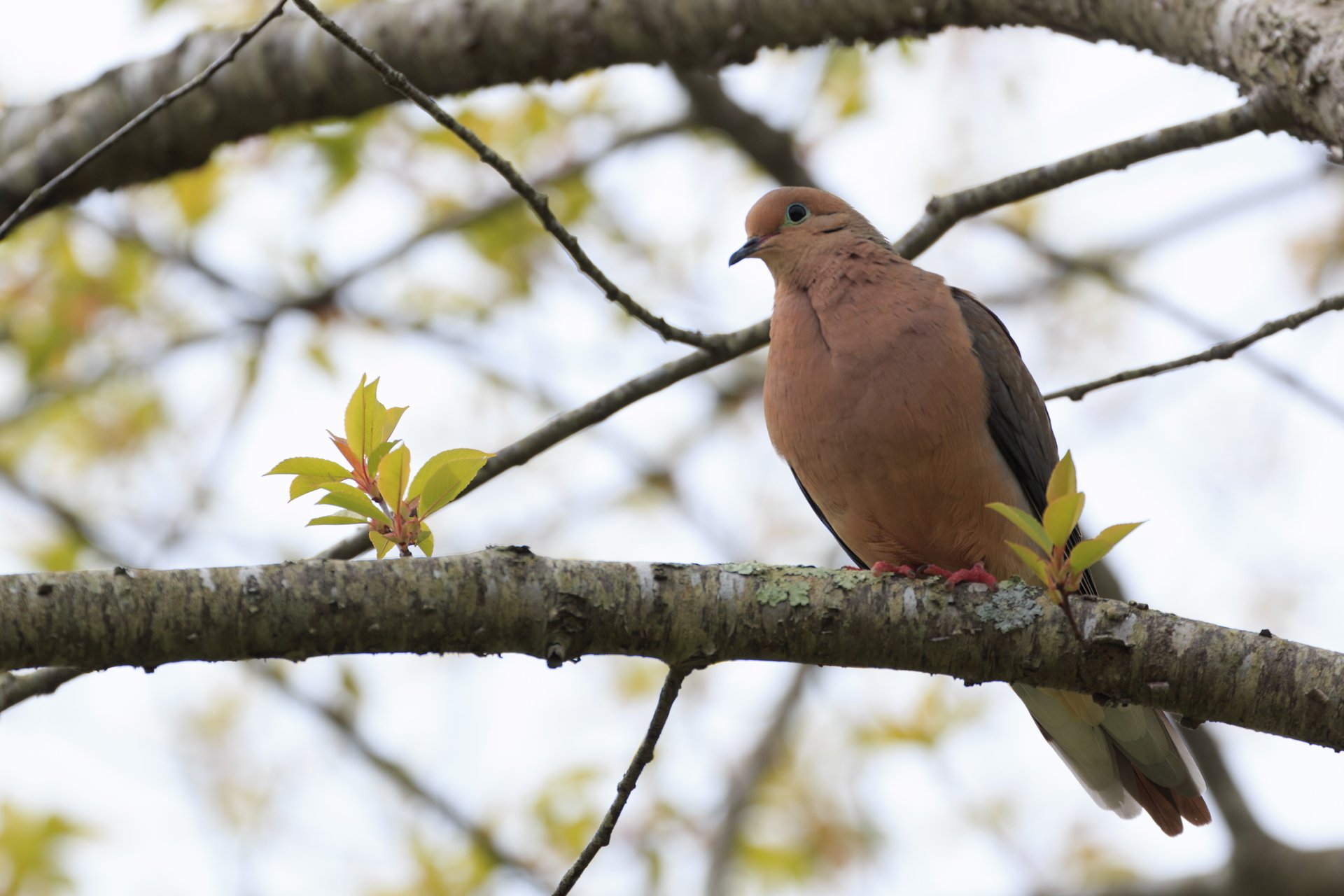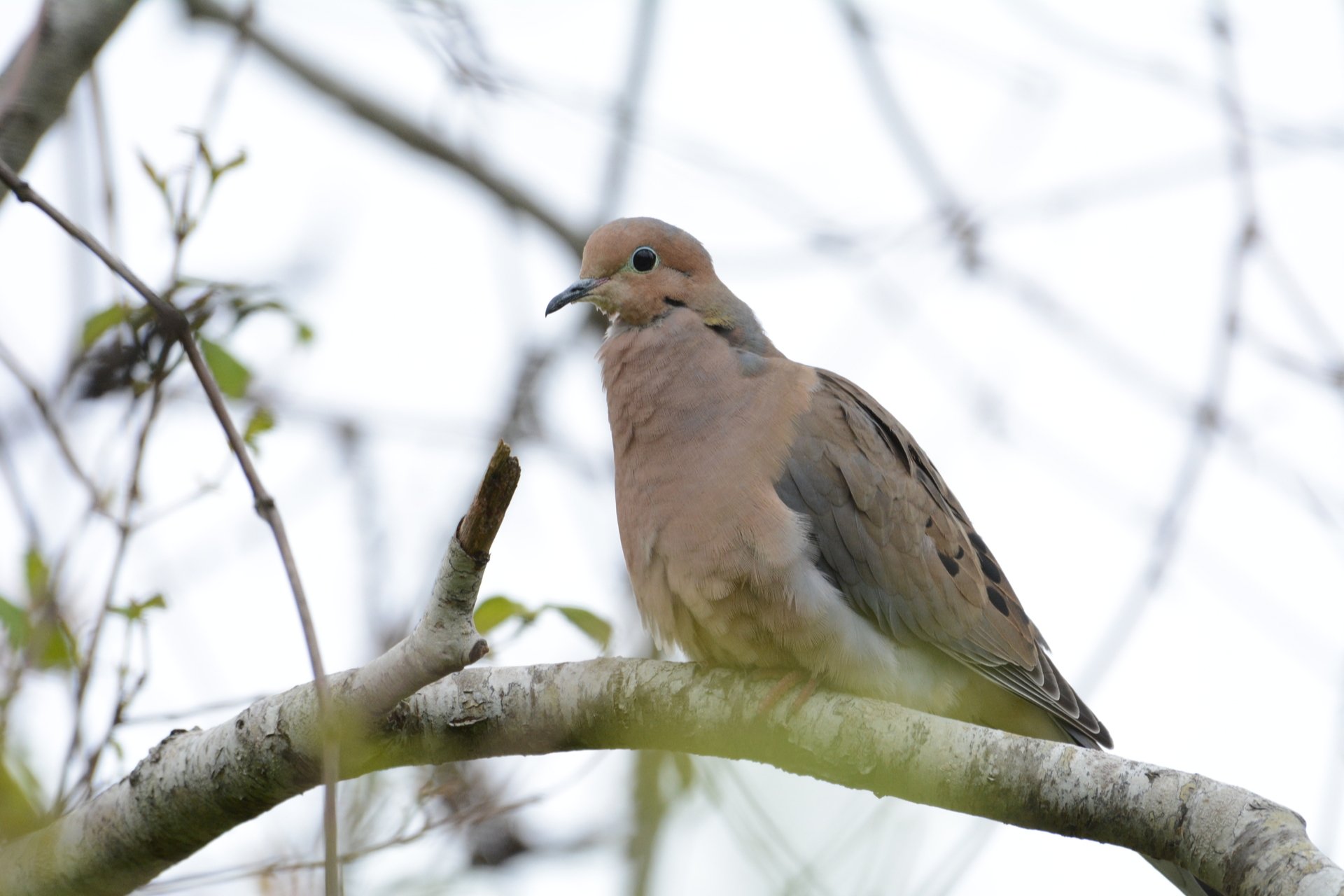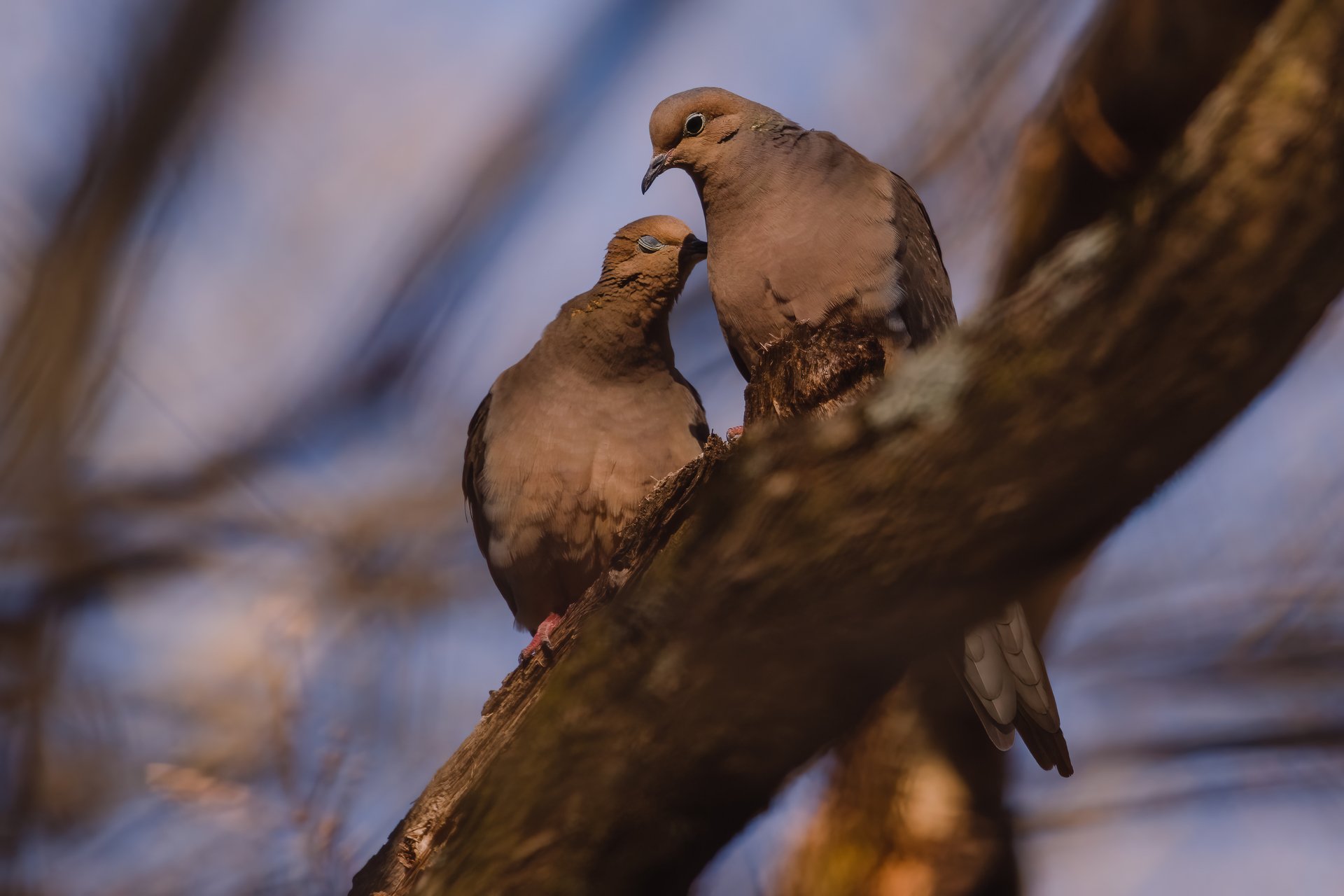Mourning Doves
Have you ever heard a soft, mournful cooing outside and made a mad dash to your window expecting to see an owl—only to find a portly, long-tailed bird instead? You've found a Mourning Dove!
Mourning Doves (Zenaida macroura) were named for the mournful sound of their owl-like cooing. They're plump-bodied songbirds with small heads and long tails, dressed in shades of soft brown and grey. A common sight year-round, Mourning Doves are generally unbothered by humans. They visit yards and gardens across the Commonwealth in all seasons.
How to Identify Mourning Doves
Mourning Doves of both sexes are cleanly attired in soft browns and greys. Their wings bear a few black spots, and most show a small gray or black dash on their cheeks. They are larger than most backyard birds, measuring 12" from bill to tail tip. The bill is small and straight, the tail long and pointed.
Their white outer tail feathers are clearly visible from behind when the birds take wing. During take-off and landing, listen for the characteristic (and loud) whistling sound generated by their wing feathers.
Mourning Dove Behavior
On the ground, Mourning Doves often look plump and dainty, walking with mincing steps and bobbing their heads as they look for food. But in flight, they are entirely different birds. Remarkably swift and agile, Mourning Doves fly straight and fast on whistling wings.
When they're not breeding or nesting, they frequently form large flocks and are often found perching on telephone wires and lamp posts in groups of 12 or more. Flocks of doves are often seen during the fall migration and through the winter, foraging for seeds below bird feeders or in agricultural fields.
Mourning Dove Mating & Nesting
Mourning Doves are able to mate throughout the year, but usually only do so from spring to fall. Breeding pairs are often seen gently preening each other's necks in a sweet bonding behavior. Breeding pairs often mate for life. While they typically make their nests in bushes and trees, Mourning Doves have been known to take advantage of any horizontal surface—such as the back of a wicker patio couch or the upturned head of a push broom left outside!
Mourning Dove Sound
Where Can I See Mourning Doves?
At the dawn of the 20th century, Mourning Doves were present in the Bay State as scattered, localized breeding populations. Today, they are nearly ubiquitous statewide in all seasons. While they're commonly hunted across the country, Mourning Doves are protected in Massachusetts.
How Mass Audubon is Supporting Birds in Massachusetts
Mass Audubon works at our wildlife sanctuaries and beyond to ensure that the nature of Massachusetts continues to thrive. By scientifically monitoring Massachusetts birdlife, Mass Audubon informs important conservation decisions and launches targeted initiatives to help at-risk species. In addition, fostering healthy habitats, supporting native species, and educating people about the importance of nature conservation is critical to our success. Learn more about our work
How You Can Support Birds in Massachusetts
Although many doves still migrate through the Commonwealth each year, the remarkable increase in this species' wintering numbers is likely due to the rising popularity of backyard bird feeders—helping these ground-foraging birds survive lean times.
Mass Audubon supports birds like the Mourning Dove every day, but we couldn’t do it without the support of our 160,000+ members.
Help support Mourning Doves, and birds like them, by becoming a member today.
Upcoming Bird Programs
See MoreEarly Bird Walk at Wellfleet Bay
-
Wellfleet Bay Wildlife Sanctuary, South Wellfleet
-
Wednesday, May 7
8:00-10:00am
Adults
Wednesday Morning Birding
-
Newburyport and vicinity
-
Wednesday, May 7
9:30am-12:30pm
Adults
Boardwalk Bird Walk
-
Stony Brook Wildlife Sanctuary, Norfolk
-
Wednesday, May 7
10:00-11:00am
Adults
Stay Connected
Don't miss a beat on all the ways you can get outdoors, celebrate nature, and get involved.






